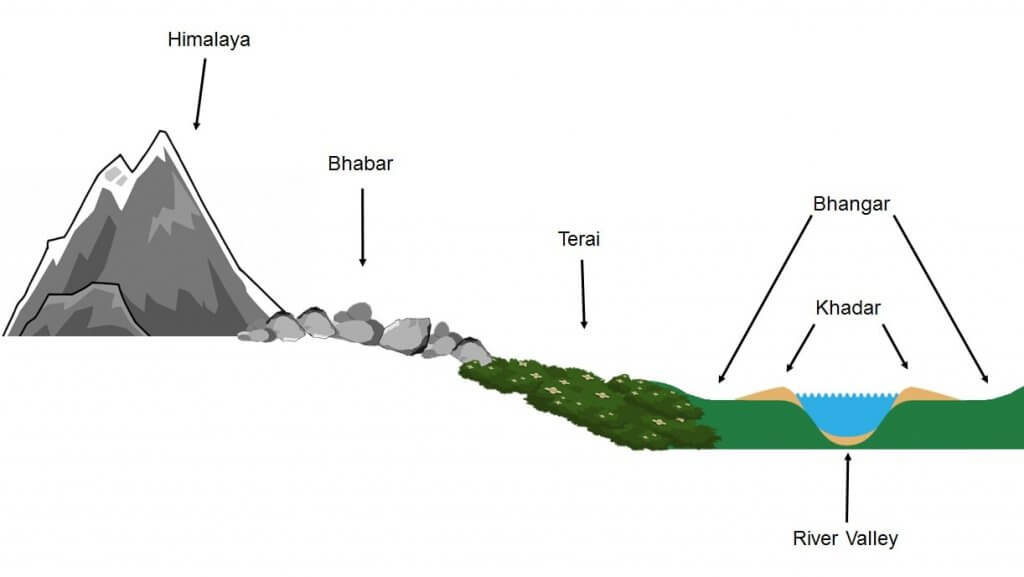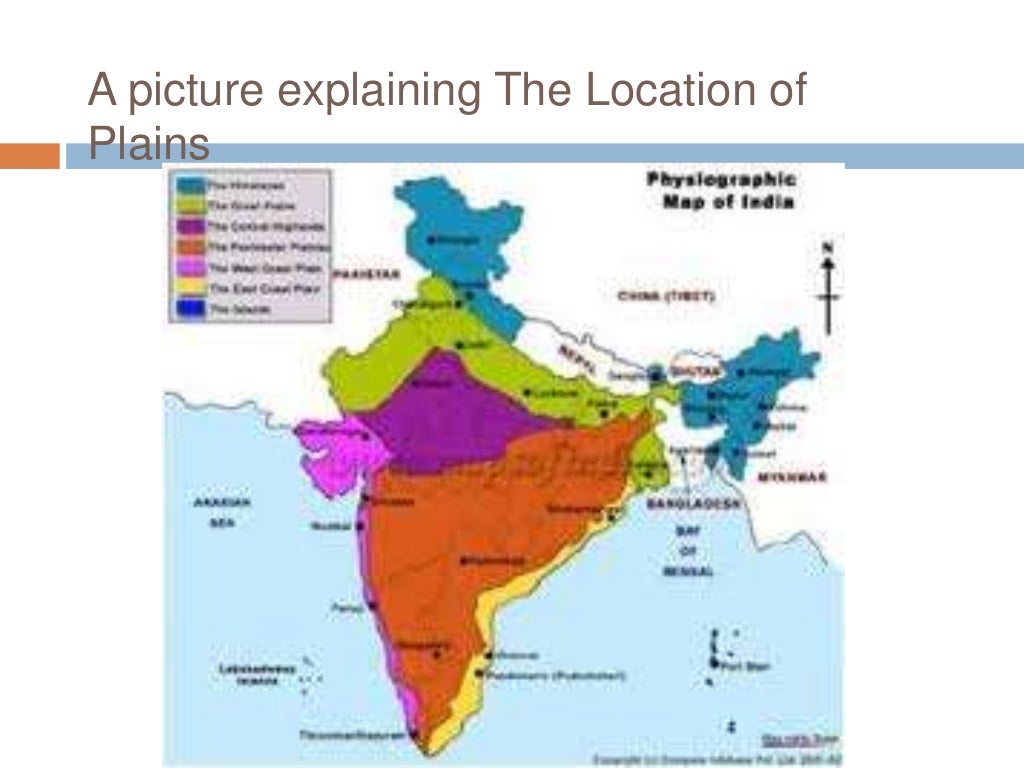
सिन्धु गंगा के मैदान सिन्धुगंगाब्रह्मपुत्र (Indo Gangetic Plains IndoGangeticBrahmaputra)
Indo-Gangetic Plain, extensive north-central section of the Indian subcontinent, stretching westward from (and including) the combined delta of the Brahmaputra and Ganges (Ganga) rivers to the Indus River valley. The region contains the subcontinent's richest and most densely populated areas.

North Indian Plains
1. Alluviation Of The Foredeep 2. In Filling Of The Rift Valley 3. Remnant Of Tethys Sea 4. Recent views Formation of Indo - Gangetic Brahmaputra Plain Formation of Indo gangetic Brahmaputra trough Depositional activity New rivers and more alluvium Features of Indo Gangetic Brahmaputra Plain Geomorphological Features of Northern Plains of India

North Indian Plain YouTube
North India is a well-defined region of the northern part of India. The Indus-Gangetic Plain and the Himalayas are the important geographical features of this region and delimitate it from.

Give an account of the Northern Plains of India? CBSE Class Notes Online Classnotes123
The Northern Plains of India span an area of over 7 lakh square kilometers. Because of the abundant water supply, agreeable climate, and fertile alluvial soil, there is a large population. The river has a mild slope, which causes the water to flow through it slowly.

Plains of India
These plains extend from the western regions of Jammu and Kashmir and Khyber Pakhtunkhwa to the eastern state of Assam, encompassing a significant portion of Northern and Eastern India. These plains serve as the primary drainage area for the rivers, playing a crucial role in the region's hydrology.

Mapsofindia Blog India's No. 1 Mapping Site Page 17
The great plains of northern India, also known as Ganga-Satlej Plains, are, in fact, transitional belt between the Himalayas and Peninsular India. The great plains cover an area 7,74,000 km 2 (3,00,000 square miles) having west-east length of 2400 km and north- south width of 144 km. Except Aravallis in the Rajas than plains no part of these.

Physical Features of India Class 9th Notes Leverage Edu
The North Indian Plain. Formed by depositional work of Rivers viz. Indus, Ganga & Brahamputra; 2400 km long & varying in width from 240 to approx. 320 km.

Geographical Significance Of The Great North Indian Plains
A significant physical division of India, the Great North Indian Plains plays a pivotal role in Indian geography and competitive exams like UPSC, IAS etc. Featuring as one of the most fertile landmasses on the Indian territory, these plains are suitable for farming, cultivation, crop production, and other agricultural activities.
Northern Plains of India video Dailymotion
Coordinates: 27.25°N 80.5°E Indo-Gangetic Plain Clusters of yellow lights on the Indo-Gangetic Plain reveal numerous cities large and small in this photograph of northern India and northern Pakistan, seen from the northwest. The orange line is the India-Pakistan border.

Coastline of India Coastal Plains of India PMF IAS UPSC Coastal plain, Ap human geography
Home » Indian Geography » Physical Geography of India » Northern Plain Northern Plain The great plains are the outcome of alluvial deposits brought from rivers originating in Himalayan and Peninsular regions.These plains extend approximately 3,200 km from the east to the west.

Indo Gangetic Plains IndoGangeticBrahmaputra
Northern plains are the youngest physiographic feature in India. They lie to the south of the Shivaliks, separated by the Himalayan Frontal Fault (HFF). The southern boundary is a wavy irregular line along the northern edge of the Peninsular India. On the eastern side, the plains are bordered by the Purvanchal hills. The Northern Plains | Part 1

Physiographic map of India Himalayan Mountains, Great Plain of North India, Peninsular Plateau
North Indian Plain - Simple English Wikipedia, the free encyclopedia North Indian Plain The North Gangetic Plains of India, Bangladesh and Nepal. The Ganges River is in the middle of the plains.

Learn about Indian Plains. Memorize the division of Indian plains using visualization. in 2020
The Great North Indian plains are homogeneous surfaces with an invisible slope. These are alluvial fertile plains formed by the deposition process of the Himalayan Rivers. Along with the Himalayan Rivers, the Vindhyan Rivers are also having a prominent role in making the land fertile. It deposits a large number of sediments along the foothills The Great North Indian plain is.
North Indian Plain Map
The Northern Plains are developed by alluvial sediments carried by the rivers Indus, Ganga, and Brahmaputra. These plains stretch for around 3,200 kilometres from east to west. The typical.

Give an account of the Northern Plains of India? CBSE Class Notes Online Classnotes123
1 Comment The northern plains have been formed by the interplay of the three major river systems, namely the Indus, the Ganga, and the Brahmaputra along with their tributaries. This plain spreads over an area of 7 lakh sq. km. The plain being about 2400 Km long and 240 to 320 Km broad, is a densely populated physiographic division.

The Northern Plains of India Regional Divisions Geography TNPSC UPSC YouTube
Northern plains of India or Indo-Gangetic plains form the second largest physiological division of India with an approximate area of 21 percent of the total geographic area of India. The Ganga, Indus and Brahmaputra flow through these plains and provide plenty of water for irrigation.